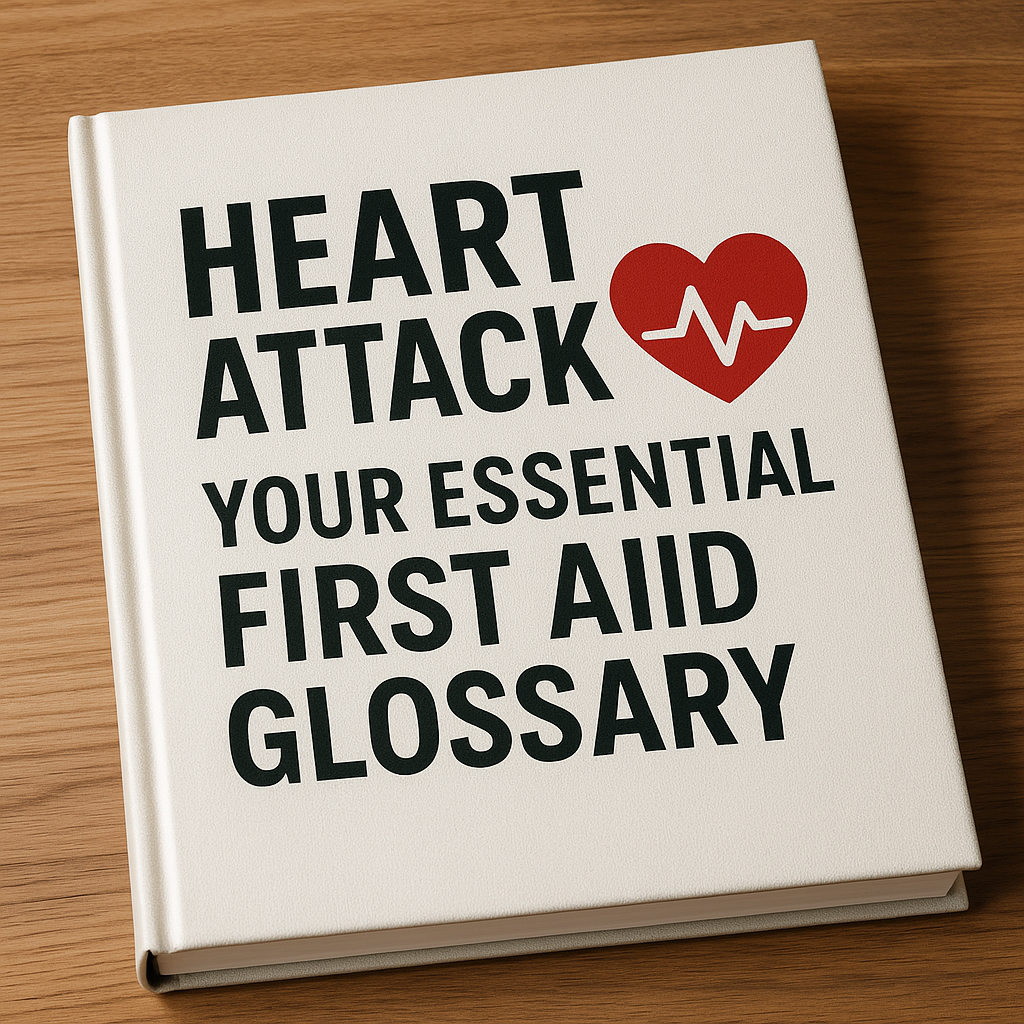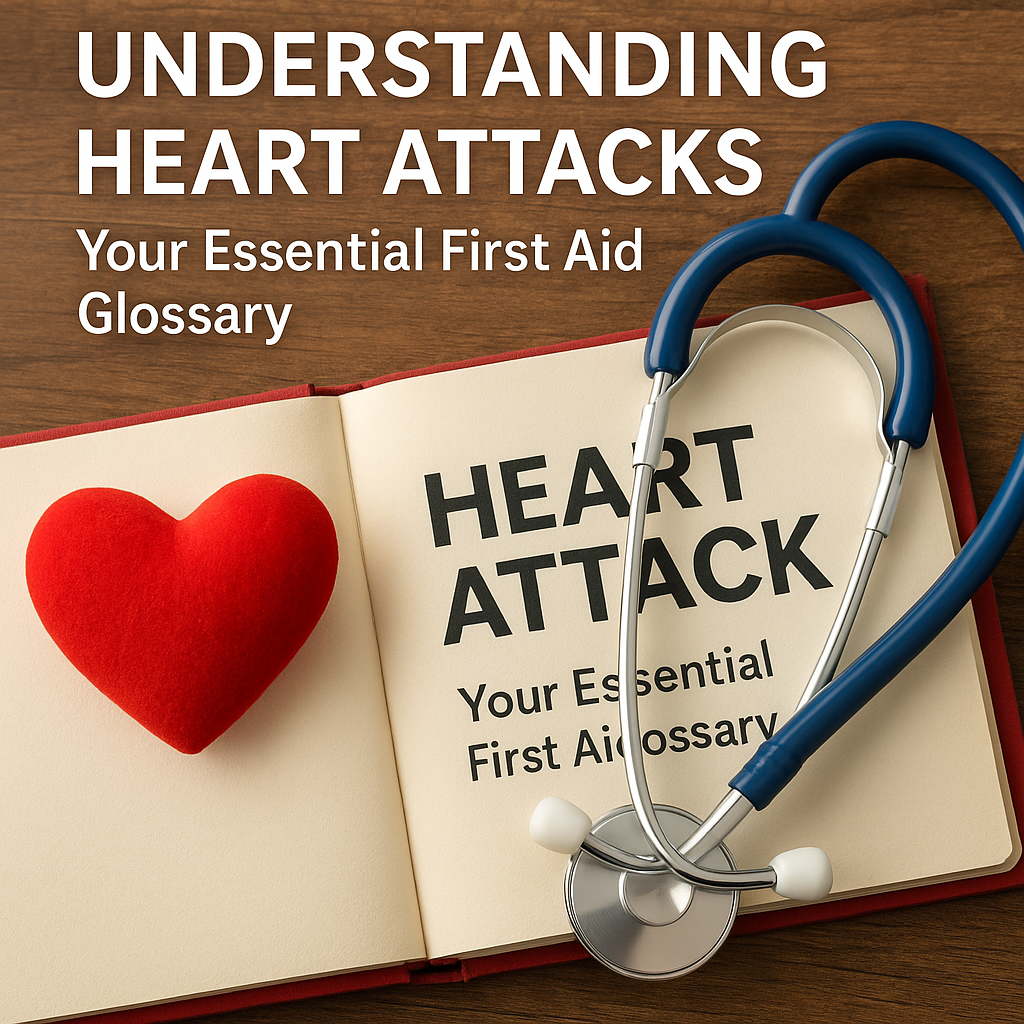- What is a Heart Attack?
- Key Facts About Heart Attacks
- Causes:
- Symptoms:
- Step-by-Step Guidance for First Aid Procedures
- Step 1: Call for Help
- Step 2: Assess the Situation
- Step 3: Comfort the Victim
- Step 4: Monitor Symptoms
- Step 5: Administer First Aid
- Step 6: Use an AED if Available
- Trainer Tips: Practical Advice and Common Mistakes
- Professional Insights:
- Common Mistakes to Avoid:
- Conclusion: Key Takeaways
Heart Attack: A Comprehensive First Aid Glossary Entry
What is a Heart Attack?

A heart attack, medically known as a myocardial infarction, occurs when blood flow to a part of the heart is blocked, causing damage to the heart muscle. This block is often due to a buildup of fatty deposits (plaque) in the coronary arteries. Understanding heart attack symptoms and first aid procedures is crucial, as prompt action can save lives.
—
Key Facts About Heart Attacks
Causes:
– Coronary Artery Disease: The most common cause, often resulting from poor diet, lack of exercise, smoking, and stress.
– Spasm of a Coronary Artery: This can temporarily reduce or stop blood flow to the heart.
– Risk Factors: High blood pressure, high cholesterol, diabetes, obesity, and family history of heart disease.
Symptoms:
– Chest Pain: Often described as pressure, squeezing, or a feeling of fullness.
– Shortness of Breath: This may occur before or during chest pain.
– Other Signs: Includes sweating, lightheadedness, nausea, or discomfort in the arms, back, neck, jaw, or stomach.
—
Step-by-Step Guidance for First Aid Procedures
When someone is suspected of having a heart attack, immediate action is vital. Here’s how to respond according to Australian first aid guidelines:
Step 1: Call for Help
– Dial 000: For emergency services, immediately call for an ambulance. State the situation clearly and provide your location.
Step 2: Assess the Situation
– Ensure Safety: Make sure the surrounding environment is safe for both you and the person affected.
Step 3: Comfort the Victim
– Stay Calm: Reassure the victim that help is on the way.
– Positioning: Have them sit down, preferably in a comfortable position (often sitting upright).
Step 4: Monitor Symptoms
– Observe Changes: Check for changes in the person’s condition, like loss of consciousness or severe difficulty breathing.
Step 5: Administer First Aid
– If Conscious:
– Encourage the person to chew and swallow an aspirin (if there are no known allergies).
– Loosen Tight Clothing: This makes breathing easier.
– If Unconscious (and not breathing):
– Perform CPR: Follow these guidelines:
– Call for help if you haven’t already.
– Begin chest compressions:
– Place the heel of one hand on the lower half of the person’s breastbone, then interlock with the other hand and compress down hard and fast (about 100-120 compressions per minute).
– Continue until emergency services arrive or the person shows signs of life (breathing, movement).
Step 6: Use an AED if Available
– Automated External Defibrillator (AED): If one is available:
– Turn it on and follow the visual and audio prompts.
– Attach the pads appropriately on the chest and let the machine analyze the heart rhythm.
—
Trainer Tips: Practical Advice and Common Mistakes
Professional Insights:
– Regular Training: Ensure you refresh your first aid skills regularly. Attend certified courses to stay updated on the latest practices.
– Know the Risk Factors: Familiarising yourself with major heart attack risk factors can help you spot potential issues sooner.
– Stay Informed about AED: Knowing how to use an AED and where to find one in your vicinity is crucial for timely response.
Common Mistakes to Avoid:
– Ignoring Symptoms: Do not dismiss minor symptoms. It’s always better to seek help early.
– Ineffective CPR: Ensure your compressions are firm and at the correct rate.
– Delaying Assistance: If you suspect someone is having a heart attack, do not wait too long. Time is critical.
—
Conclusion: Key Takeaways
Recognising and responding to a heart attack is essential for saving lives. Remember to call for help immediately, monitor the person’s condition, and if needed, perform CPR or use an AED. Educating yourself about the signs and first aid procedures can empower you to act decisively in emergencies.
Understanding heart attacks and first aid vocabulary is essential for everyone, as it equips you with the tools to respond effectively in critical situations. Just like any skill, practice and awareness can make a significant difference. Be prepared, stay informed, and ensure you’re ready to help when it matters most.
For more detailed information, consider enrolling in a first aid training course so you can gain hands-on experience and enhance your confidence in these life-saving techniques.

Leave a Reply